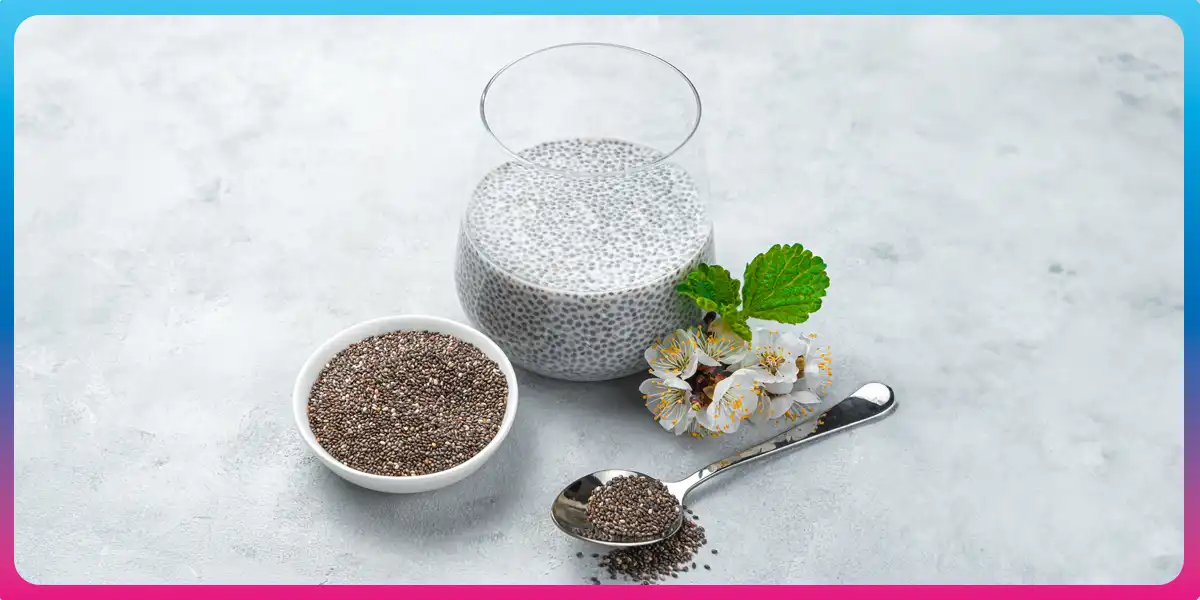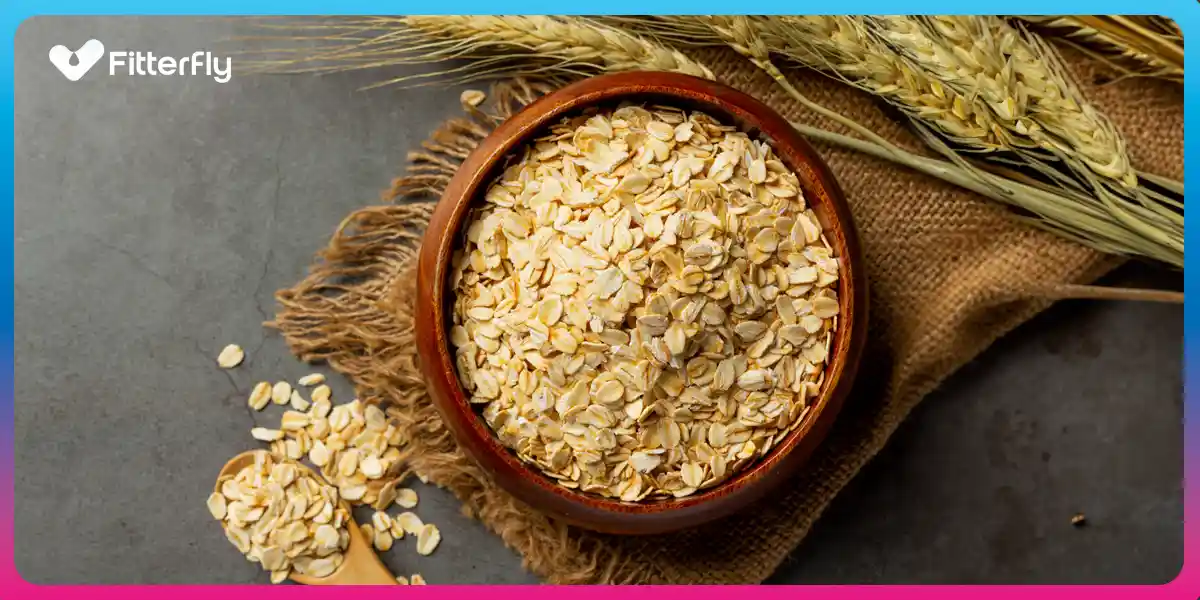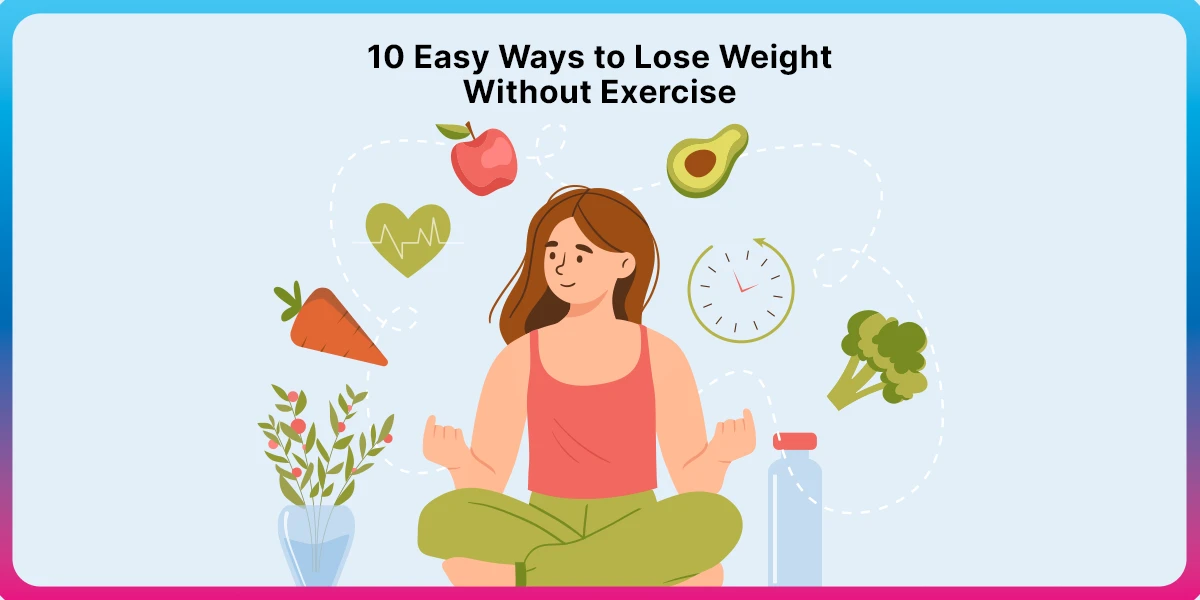50 Indian Diet Tips to Beat Prediabetes

If you have been diagnosed with prediabetes you should take control of your health now. Prediabetes is a condition where your blood sugar levels remain higher than normal but not too high to be diagnosed as type 2 diabetes.
However, this condition is like a red flag, if you don’t act now, it can progress to full-fledged type 2 diabetes. In prediabetes, your fasting blood sugar levels range between 100 and 125 mg per dL whereas your normal blood sugar levels should be between 50 to 99 mg per dL.
What happens if prediabetes is not controlled?
If not diagnosed and acted on time it can silently lead to type 2 diabetes. Prediabetes is like a warning sign for you to take all the necessary precautions to avert type 2 diabetes and dependence on medications.
Impact of diet on prediabetes
Simple things like diet modification, lifestyle changes go a long way in reversing prediabetes and getting your blood sugar under normal range. However, diet changes need proper planning and a scientific approach too.
Take the first step towards a healthy, happy lifestyle by assessing your risk.Pre-diabetes Risk
Calculator
Remember, you cannot deprive your body of nutrients while you try to bring in some changes in your diet for the better. It is best to take professional help to chalk out a correct diet plan that suits your body type and physiological needs.
50 Indian tips to do it right
Lets redo the carbs story
1. Count your carbs
You should be cautious about your carb intake if you have prediabetes. Your carbohydrate load should not increase beyond 30 to 45 gm in your main meals and 15 to 20 grams for your snack.
These numbers are difficult to track but here are a few examples that can help you: For 30 to 45 gms of carbohydrate in your meals aim for two to three servings of vegetables, like – 1⁄3 cups of baked beans – rajma, chowli, chole ½ cup green peas, ½ cup vegetable korma or 1 ½ cup vegetable tofu stir fry, each of which has 15 gm of carbs each.
For snacks, some options are 2 mini rava idlis, one medium vegetable cutlet, one small apple (with approx 15 to 20 gm carbs in each).
1) Get smart with carbs
Go for complex carbs over the simple ones – replace your white rice, white bread, white flour (maida), breakfast cereals with brown rice, millets, quinoa, whole grains, whole wheat – as they release glucose slowly into the bloodstream and helps to control blood sugar levels, especially postprandial. One tip: cut down on rice and add one chapati to your main meals.
2) Choose the right combination of foods
While keeping a low carbohydrate count, don’t forget to get enough fiber from your diet. Fibre is roughage that doesn’t get digested and comes out of the body intact.
But it improves your gut health and keeps blood sugars in check. Add dark leafy vegetables like palak (spinach), methi (fenugreek), sarso mustard, arbi leaves (colocasea), sahjan leaves (moringa/drumstick); fruits like pear, apple, banana, dry fruits like prunes, raisins, anjeer; beans like rajma, chana, chole, and berries like gooseberries, Indian jujube (bor) into your shopping cart.
However, remember all foods have calories, so don’t go overboard with them. You can also use the Fitterfly Wellness App to know how many calories you are consuming in a day and moderate your intake.
3) Avoid processed foods
Processed and packaged foods are high in sugar and carbs. It is best to keep away from them, especially if you have been diagnosed with prediabetes.
Make it a rule: If you have to open the packet and eat directly from it, you are better off than having that food. Time to say goodbye to your savories, snacks, biscuits, microwave meals, et al.
4) Identify the hidden sources of sugar
The very reason you are trying to cut down on carbs is to get sugars in control. Our basic knowledge of science tells us that carbohydrates break down into sugar.
You don’t want to ruin all your efforts while adding more sugar to your system by consuming foods that are high in sugars. The obvious ones are – sweets, cookies, pastries, cakes and the hidden sources of sugars are – breakfast cereals, flavored yogurt, condiments, health drinks. Stay away from them.
Take the first step towards a healthy, happy lifestyle by assessing your risk.Pre-diabetes Risk
Calculator
GI score: Rate your foods on this scale before you eat
1) Get knowledge about personal glycemic response:
One way to beat prediabetes is to know how your body responds to different foods and how quickly sugar from a particular food will enter your bloodstream.
Same foods act differently on different people so it is imperative to know which foods you should choose to keep your blood sugars in check. Get an assessment done by experts to gain more knowledge about the same. Check out this video to understand what is personalised glycemic response and its role in diabetes.
2) Choose foods that have a low glycemic index
The GI rates food as they affect blood sugar levels. The highest score is 100, and the lowest is 0. It doesn’t give you an idea about the amount of carbohydrate in the food but is an effective tool in choosing foods.
As a rule you should choose foods with a GI score of 55 or less as they raise blood sugar levels slowly. For instance, apples, raw carrots, green leafy vegetables, kidney beans have a low GI value (below 55) whereas white rice, white bread, potatoes have high GI values (above 55).
3) Make a list of healthy foods that are not suited for you
Make a list of foods, even the healthy ones that increase your blood glucose levels, and stay away from them. A detailed assessment like ambulatory glucose monitoring (AGM) or Continuous Glucose Monitoring (CGM) can help in this regard. Sometimes even a healthy option like carrots or apples can spike glycemic response in someone.
4) Don’t forget moderation
Even if you choose everything healthy and get the right diet plan in place don’t forget to eat everything in moderation. Remember, no food is calorie-free. Eating more healthy foods can increase your weight and negate all your efforts in beating prediabetes.
5) Don’t forget micronutrients
While it is necessary to count your carbs and choose foods that have a lower GI score, it is also necessary to include a variety of micronutrients in your diet – iron, zinc, calcium, vital vitamins, magnesium – as a deficiency of these can also make your blood sugar levels go haywire and affect other functions of the body.
Plan well for the 4 pm hunger pangs
1) Choose your snacks wisely
When controlling blood sugar the bigger challenge is to control the sugar load during snack time more than during meal times. As mentioned before, your carb load for a snack should not exceed 15 to 20 grams.
So, choose foods that satiate you and keep you fuller for longer. For instance, one regular biscuit has 15 gm carbs and so does a small apple. You know which one you should choose to satiate yourself, right?
2) Ensure that your meals and snacks are spaced out throughout the day
To beat prediabetes, remember to avoid too long or short gaps throughout the day. Have your six meals spaced out after every five to six hours for optimal blood sugar management?
Some people might need to keep this gap for up to 3 to 4 hours maximum. This again depends on your health status and personal glycemic response. An expert evaluation is necessary to determine the same.
3) Don’t replace snacking time with smoking time
If you want to seriously prevent the progression of diabetes from prediabetes try to give up your vices like smoking, tobacco, and alcohol. These are risk factors for diabetes. Don’t smoke when you have to snack.
1) Plan your snacks in advance
People usually go wrong with snacking because unlike the main meals snacks are not planned well in advance. So keep a snack bag ready – stuffed with roasted chana, makhana, fruits. In this way, you will know what to pick up when you are hungry.
2) Don’t binge on snacks
This is a complete no-no for obvious reasons – excess calorie intake and overeating.
Proteins: The macronutrient that needs attention
1) Don’t miss out on proteins in your diet
Protein is one of the three main macronutrients along with carbohydrates and fats that provide fuel to our body. While you cut down on carbohydrates, remember to up your protein intake to help your body function at its optimal. Ideally aim for 80 to 100 gm of protein per day.
The best sources of proteins are lean meat, chicken, eggs, dals such as masoor, toor, akha moong, tofu, cottage cheese, and dairy products like paneer, milk, and yogurt.
2) Choose proteins with care
Limit intake of red meat and processed meats like ham, bacon, and hot dogs because these tend to be high in saturated fats and can do great damage to your blood sugar levels and increase risk of other illnesses.
3) Balance between plant and animal proteins
Both plant and animal proteins are good for people who are trying to lose weight and control blood sugar levels. Dals, tofu, soya, nuts, seeds, rajma, chickpeas, green peas are good sources of plant-based proteins.
Plant foods tend to be high in fiber and low in saturated fat, which can help decrease insulin resistance and improve glycemic control. Animal proteins have the highest quality protein with all amino acids. So, it is best to get a diet plan which helps you to get a balance of all types of proteins.
4) Don’t overdo proteins
Ensure that you have the right amount of protein in your diet and don’t overdo it. Too much protein can lead to organ damage if your blood sugar is not controlled properly.
5) Go slow with protein supplements
If you are into strength training and take supplements to build muscles it is best to have a word with your doctor or healthcare coach to know how much protein you need and if you are taking it in the right amount. Also, be sure before choosing the right supplements for yourself.
Don’t say no to fats
1) Get the facts about fats right
We know that fats are also a macronutrient that we cannot avoid. There are good fats and bad fats. Choose foods that are high in unsaturated fats as they are good for heart health and also helps to keep blood sugars in check. Your best picks are: nuts, almonds, peanut butter, ghee, olive oil, and more.
2) Avoid trans fats completely
No questions asked. They are the bad kind of fats that increase LDL cholesterol and reduce HDL cholesterol. They also make your blood sugar levels go haywire. Stay away from Packaged foods, fast foods, fried foods, and high-calorie bakery products for the same reason. Always check the nutrition label to ensure it has zero trans fat.
3) Choose your cooking oil wisely
Cooking oils can make your blood sugar levels soar, especially if they are high in trans fats. The best picks are rice bran oil, sunflower oil, olive oil which are rich in unsaturated fats.
4) Go slow with good fats too
Having a handful of nuts or seeds sprinkled on your curries and salads is a good thing but if you go overboard with them you can ruin all your efforts in healthy eating, so be careful.
Keep a check on caffeine
1) Control your caffeine intake
Having more than two cups of coffee a day can work against your diet plan as caffeine can have a damaging effect on your blood sugar levels. For the same reason, stay away from high caffeinated drinks – sports and health drinks.
Don’t miss out on micronutrients
1) Check on your deficiencies
Raised blood sugar levels can lead to certain vitamin and mineral deficiencies. It is imperative to check for these deficiencies so it doesn’t lead to other health problems. Getting an assessment done by experts can help you understand these deficiencies and act on them.
2) Trace elements and minerals are also necessary
Just because we need them in minuscule amounts does mean they are not needed. The right minerals and vitamins in fact help in carbohydrate synthesis and fat metabolism too.
3) Avoid OTC drugs
Don’t take supplements without consulting with doctors or your health coach. It can lead to side effects.
4) Check food labels
While buying food from stores, always read the levels carefully. Look at total carbohydrate and sugar content before picking up a pack. Check for hidden sugars names like – fructose, sucrose, maltose, dextrose, corn syrup, corn sweetener, rice syrup – which are all sugars with different names. So, beware.
5) Don’t miss on your prescribed supplements:
If you need to take calcium or iron medications take them on time without skipping your doses.
Inculcate some food discipline
1) Eat from a small plate
Choose smaller dinnerware as this will help you to practice portion control and eat in moderation.
2) Chew your food
Sometimes we don’t chew our food and swallow it down. This makes us eat more as the brain fails to recognize when to send a cue to stop. So chew every morsel at least 10 to 15 times before swallowing it. One reason for unwanted weight gain is not chewing food properly.
3) Learn the plate method
An ideal nutritious plate should be filled like follows – Half plate with vegetables – cooked, steamed or tossed, A quarter of the plate with proteins – meat, eggs, legumes, pulses, tofu, cottage cheese or paneer. Other quarter with complex carbohydrates like – brown rice, chapati, millets, daliya, etc
4) Restrict second helpings:
Sometimes we go overboard with second helpings. If you want to get more food on your plate ask yourself if you really need it. If you want to enjoy your food refer to tip 17 – chew your food properly to enjoy a dish thoroughly.
5) Don’t skip meals
Too long gaps between your meals can make you more hungry and make you eat more, which can be detrimental to your blood sugar management.
Develop a holistic approach to develop better eating habits
1) Stay hydrated:
Don’t forget to drink your 8 glasses of water throughout the day. Dehydration means increased blood sugar levels. In fact, for people with diabetes dehydration can be dangerous.
2) Keep a positive attitude
Wondering how this will help in lowering blood sugar? Well, having a gloomy mood affects your hormones which can trigger binge eating or emotional eating. Two perils that you need to avoid when it comes to blood sugar control.
3) Don’t eat when stressed
Usually, we end up eating more when stressed so stop having meals at your desk when you are running against a deadline or when you want to turn to food for comfort. Instead, go for a walk, listen to music or read a book to calm your mind. We don’t realize but our psychological well-being influences our eating habits and blood sugar levels too.
4) Get a good night’s sleep
Sleep deprivation can increase blood sugar levels and increase hunger and initiate late-night binging. So, make it a point to go to bed on time to avoid excess calorie consumption.
4) Visit organic farms or grow your produce
Sometimes to eat well and healthy you need to develop a relationship with food. So, visit an organic farm to know more about food and nutrients or grow your own produce for that matter.
Cook well to eat well
1) Change your cooking style
Not just what we eat, how we eat it also makes the difference. Changing your cooking style can help to retain more nutrients and aid in the process of healthy eating and blood sugar control. Try switching to different cooking methods like boiling, sauteing, steaming to retain nutrients and have wholesome foods.
2) Add more flavors
Add herbs, roots, whole species to your meals rather than store-bought masalas. These will improve the nutrient quotient of your meals and aid in various functions of the body.
3) Add seeds and nuts to your meals:
While you cut down on adding dollops of oil and butter to your dishes to make them healthier, add some seeds and nuts to your dishes to keep the balance of healthy fats maintained.
4) Eat more raw foods
Don’t forget to have a bowl of salad as a side with your meals.
5) Measure your meals
Okay, we aren’t telling you to weigh them, but make sure that your one katori is a standard size katori and not a big bowl.
Treat your food with respect
1) Maintain proper eating hygiene
Always eat on time and avoid long gaps between meals. Ensure that there is a sufficient amount of gap between your dinner and breakfast for optimal blood sugar control.
2) Avoid any kind of distraction while eating
Practice mindful eating to eat healthily and consume the right amount of calories. To do this keep your smartphone away and don’t watch TV while eating.
3) Follow your diet pattern during vacations
Even if you are on vacation, don’t break your diet pattern. This will lead to overeating and subsequent weight gain.
4) Don’t eat more only because food is available
Sometimes we tend to eat more because food is available around us, tend to break this toxic eating pattern and garner will control to avoid overeating.
5) Do some exercise to burn calories
Remember diet and exercise go together when it comes to controlling blood sugar and keeping it in the normal range. No matter how many changes you bring into your diet, without having a proper exercise schedule in place nothing will be effective. Exercise will improve insulin sensitivity and complement your efforts in dieting too.
To reverse prediabetes, a personalised and scientific approach is necessary. This is where Fitterfly – A digital therapeutic program for diabetes and prediabetes management comes into place.
Take the first step towards a healthy, happy lifestyle by assessing your risk.Pre-diabetes Risk
Calculator
At Fitterfly, a team of specialists, including – a nutritionist, a certified physiotherapist and a clinical psychologist, help you to achieve individual health goals with tailor-made diet and exercise plans according to your needs.
In addition, regular counselling will help you feasibly align your goals to sustain them lifelong. With Fitterfly our coaches would take into account every minute detail through the Fitterfly Wellness App to track your diet and lifestyle and a CGMS device to come up with a tailor-made nutrition plan to help reverse prediabetes.
To know more about Fitterfly and how we can help you smartly take control of your prediabetes, visit our website, or speak to one of our counsellors on 08069450746













